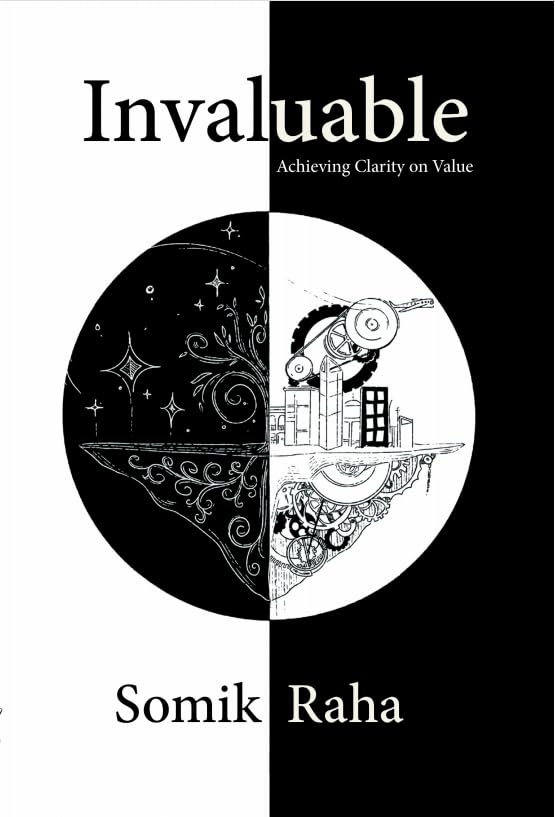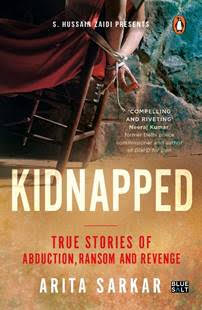
In a world where decision-making often feels overwhelming, “Invaluable: Achieving Clarity on Value” serves as a much-needed guide to aligning choices with personal values.
A groundbreaking book that helps readers clarify their values and integrate them into daily decisions, inspiring a fulfilling life. Each chapter empowers readers on a journey of self-discovery, guiding them to understand their unique values blueprint.
Chapter 9
THE INFINITY
What makes distinctions a valid representation
of I, they asked?
Little did they fathom that I am the source of validity
The ancients of the Middle East had stumbled onto a transcendental experience of wholeness like no other. Returning to daily life from such experiences, they wanted to explain this to their communities. They wanted to warn their people about a big counterintuitive danger. The feeling was very real but explaining this would be rather abstract. How does one explain this in a way so it sticks, especially with people who were shepherds or ancient agrarians? They chose a metaphor that the world would never forget. We know this metaphor from the Hebrew Bible as The Garden of Eden.
The biblical ancients chose the story of Adam and Eve having an idyllic, carefree life in the Garden of Eden, which contained two special trees: The Tree of Life and the Tree of Knowledge. In the story, God told them not to eat the fruit of the Tree of Knowledge. After Adam and Eve disobeyed and bit into the fruit, they were expelled from the garden. They and their children for all generations were condemned to a life that included hardship, toil, and suffering.
As you know, I committed to not bringing up God in this book’s contributions. True to my word, I will interpret this incredible story from a secular humanist lens. I would like to think that the biblical ancients were terrific philosophers who were trying to tell humanity that knowledge is fundamentally problematic. Knowledge is based on distinctions, and distinctions divide a reality which itself knows no distinctions. Therefore, when one becomes knowledgeable, one is really seeing separation from a unifying reality. Remember the pot metaphor from the preface? We had written:
When you call a mound of clay a “pot”, you are making a distinction in a mass of undifferentiated clay and labeling a particular shape “a pot.” You are also reducing all other experiences in the universe to “not pots.”
The biblical ancients were warning us about the trap of failing to see the clay in the pot! Knowing that clay helps us know the substance of all pots.
What a profound philosophy! And the metaphor they picked was sheer genius. The world engages with it at scale to this day. Kabbalists and other Jewish mystics interpret the metaphor as follows: The Tree of Life is reality without distinctions, felt as the Oneness of all being; the Tree of Knowledge is duality which rests on distinctions that create separation from reality. This story points to our universal story as humans. Our source is an underlying reality that unites all of us — or simply, Oneness. But in order to become fully human, we need to plunge into the world of Duality. Just staying in Duality can obscure our underlying unifying reality, and when that happens, we humans experience suffering. Drawing from this biblical metaphor, we will define Knowledge Bias, as the conflation of a distinction on reality with the underlying reality itself. From Chapter 3, using Hartman’s distinctions, this is like confusing a systemic value to be an intrinsic value. A popular quote that captures the essence of Knowledge Bias is Alfred Korzybski’s dictum, “the map is not the territory.”
What happens when we are able to transcend Knowledge Bias and connect to reality as it is through a sense of Oneness, while at the same time, fully embracing our Duality that gives us Uniqueness? That transcendence is the experience of being in the Garden of Eden! You cannot have the garden with just the Tree of Knowledge or just the Tree of Life. You need both!
Distinctions are the vehicle of our knowledge. They help us be efficient and creative, and yet, by making distinctions on an indivisible reality, we become blind to that indivisible reality. Perhaps the essence of this teaching is what the ancient Vedantic poets were also pointing to in one of the most mysterious verses of the Isha Upanishad (1.9):
अन्धं तम: प्रविशन्ति ये ऽवि द्यामुपासते |
ततो भूय इव ते तमो य उ वि द्यायां रता: ||९||
Andham tamaḥ praviśanti ye’vidyāmupāsate |
tato bhūya iva te tamoya u vidyāyāṃ ratāḥ || 9 ||
The worshippers of ignorance enter a blind darkness. Into an
even greater darkness enter those who pursue knowledge alone.
How could knowledge lead us toward greater darkness than ignorance? Our ancient ancestors across different cultures seem to be warning us that conceptual knowledge, by its nature, requires separation from reality, and one has to overcome that separation to return back to reality. The Jewish mystic view of needing both trees to create the context for the Garden of Eden is highly resonant with Tagore’s poetry of rebellion that we engaged with in Chapter 4: the limitless us is seeking to experience itself within the limits of our humanity. This is only possible by accepting the need to create distinctions, and indeed, seeing it as a privilege.
One can see a similar attempt being made by author Christopher Alexander in “The Timeless Way of Building,” and in general, his life work on patterns and pattern languages. Situated in architecture, Alexander’s thesis is that we can build in a way that the receivers of our work receive our aliveness and are inspired to be alive. The patterns of such aliveness capture a timeless way of building. When we hear timeless, we don’t just hear “ancient,” we can also hear in it the present as devoid of all causal inference, and being the cause of it all. Our aliveness is indeed the cause of all our inspired work, and the lack of it, the cause of thoughtless monstrosities. One can find patterns of aliveness in every field of work, and this book is an attempt to bring out patterns of aliveness in the field of metrics.
It is also fitting that the end result of an integration of our aliveness with our creation is the context for the “Garden” of Eden, connecting back to the garden metaphor for work from Chapter 3.
Such a metaphor invokes words like “cultivation,” so we may graduate from being tourists in our own life story to becoming active participants in our own evolution. We are tillers of our own soil, providers of the water that nourishes our being, and positioners of our work so it gets the light it needs appropriate to its stage of maturity. When the fruits of this cultivation arrive, they will be our joyful gift to give away to all who would partake.
You didn’t see this coming, but now that it’s here, it all seems to make sense. If you are amongst the people of the book, this is offering a deeper appreciation of a sacred metaphor. In this book, we have done a deep exploration of combining information we get through our feelings with what we wish to offer the world. We have arrived at frameworks that, with just a few words, help us externalize our seemingly infinite selves. What makes this work valid? The neuroscience exploration in Chapter 8 shows us that descriptively, we have more information than we thought we did.
How do we lay at rest the question of normative validity, by which we mean, what principle do we have to accept for this work to be valid? And, didn’t we commit to providing our insights through the narrow constructs of counting? Yes, we did. We started our journey with one of the two most mysterious of our mathematical constructs, the number zero. It is time to close our journey by leaning into the other most mysterious of mathematical constructs, infinity.
About The Author
Somik Raha, raised in India, brings together his Eastern upbringing with over two decades of Western experience. His journey from coding at age 12 to a deep exploration of philosophy led him to examine the human aspect of technology. Holding a PhD from Stanford, his focus lies in achieving clarity on value. Currently based in the Bay Area, Somik continues to explore the intriguing intersection of technology, philosophy, and humanity.
Book excerpt – Pg 280-284
( Extracted with due permission from author, publisher)
[the_ad id=”55722″]












